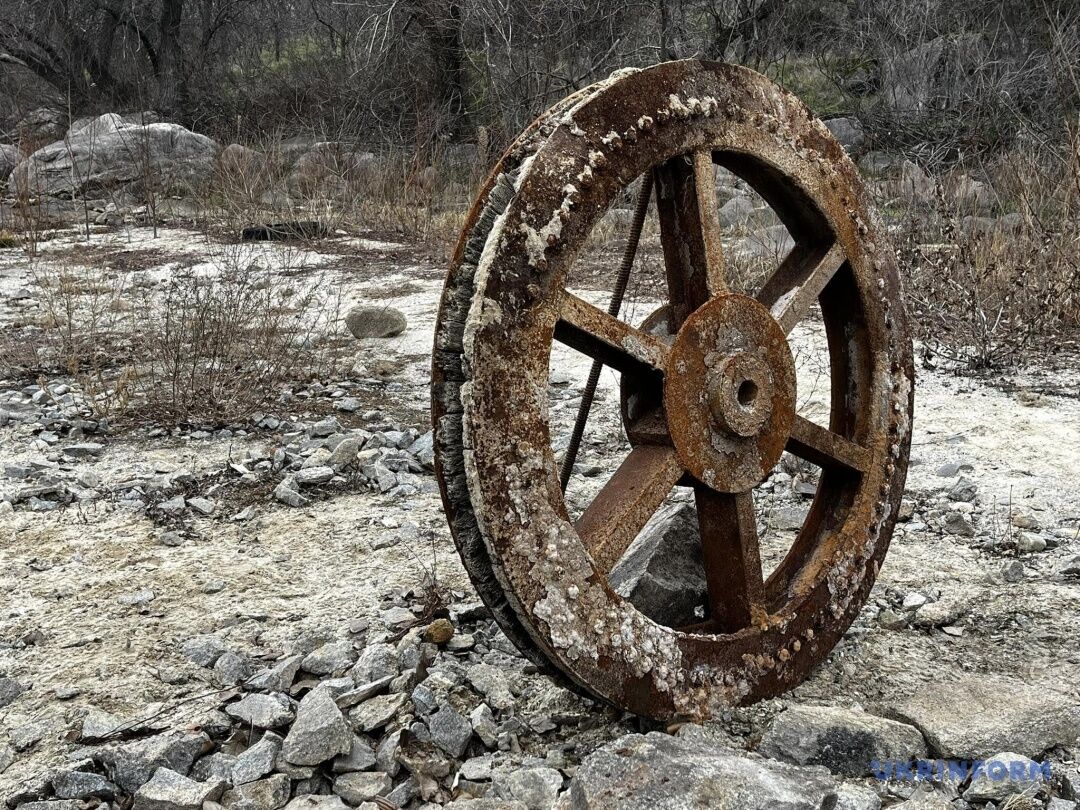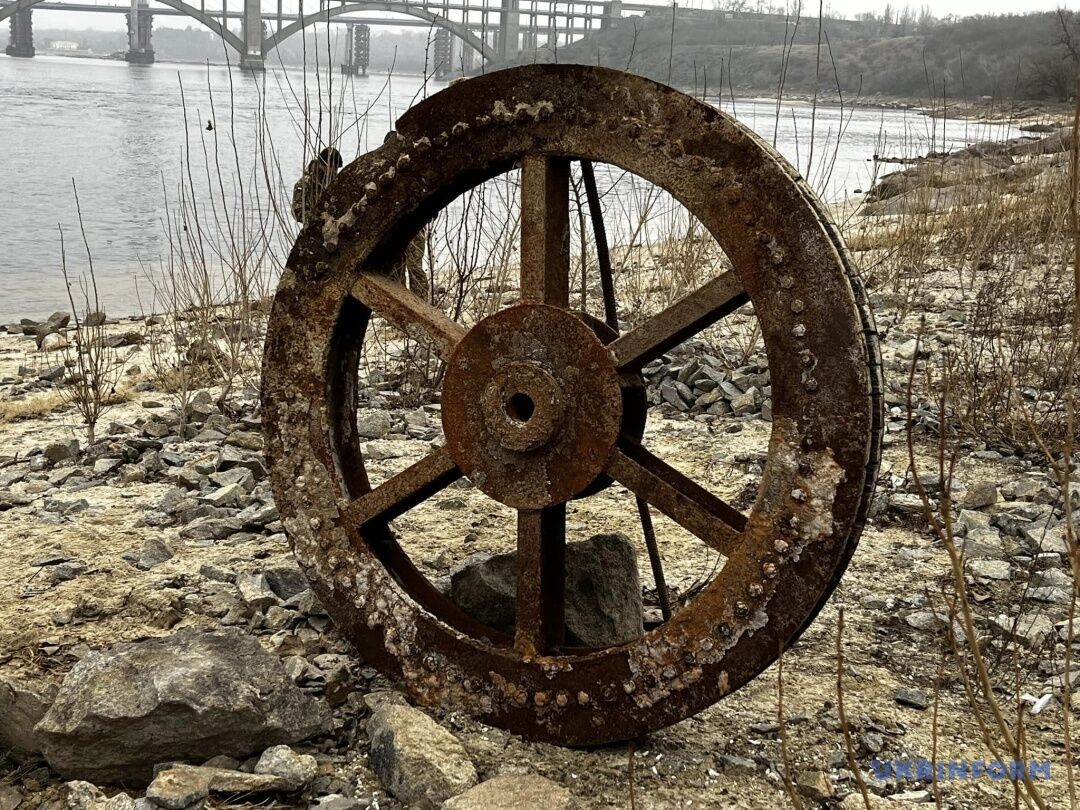News
A wheel was found on Khortytsia that was used during the construction of the Dnipro Hydroelectric Power Station almost 100 years ago. Photo
After the Russian occupiers destroyed the Kakhovka hydroelectric power plant and the water level in the Dnipro River dropped, a wheel was found on Khortytsia. According to experts, it was used during the construction of the Dnipro HPP.
The found artifact was once part of the grounding of the towers built on the island. A resident of Zaporizhzhia, historian Oleksandr Shkalikov, told Ukrinform.
"After the destruction of the Kakhovka HPP, the water level dropped near the Dnipro HPP. In addition to rocks, various artifacts were exposed here. For example, last year we found a 5000-year-old hoe. And now modern artifacts have come to the surface. The latest is a wheel that is associated with the construction of our hydroelectric power plant and 75-meter power line towers," Shkalikov said.
The historian noted that in 1927-1932 the construction of the hydroelectric power plant took place. At that time, four towers were erected on the island of Khortytsia, and the same number was on the left bank of the Dnipro. These pillars connected the left bank with the island and the hydroelectric power plant.
According to the expert, one of the pillars was destroyed during World War II, and the metal wheel found is an element of this pillar.
"In addition to iron, there are elements made of oak. The oak is well preserved under water. There are wheels on the remaining towers. There are four of them on each pillar. Cables-wires pass through them. Their purpose is to divert lightning from the masts. This wheel is part of the grounding of the towers," emphasized Oleksandr Shkalikov.
Interestingly, the historian had known about this artifact, which was visible from underwater, for a long time. However, he could not lift it on his own, because the wheel weighs 150-200 kg and is 1.5 meters in diameter.
But thanks to concerned admirers of historical values, the wheel was finally taken out of the water and transferred to a restoration hangar, the historian says.
According to Oleksandr Shkalikov, specialists of the Khortytsia National Reserve will examine the artifact, restore it, and then it will become part of the museum collection.
Only verified information is available on the OBOZ.UA Telegram channel and Viber. Do not fall for fakes!





























